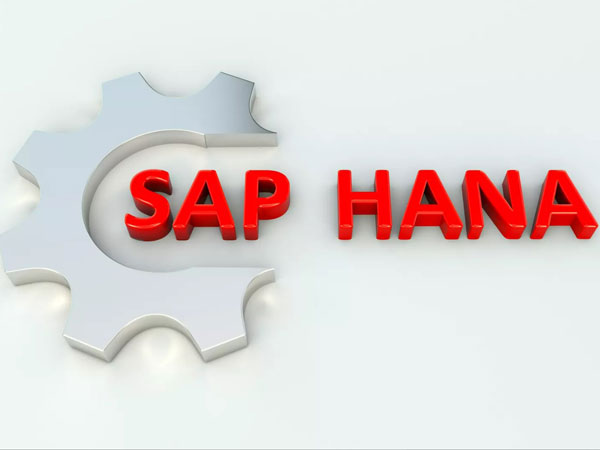Blog
SAP S/4HANA Adoption: The Ultimate 2023 Roadmap
February 15, 2023
February 15, 2023
SAP S/4HANA adoption is gaining pace across the business community—including new and existing enterprise resource planning (ERP) customers.
The new ERP system from SAP—S/4HANA—adds exciting new features and capabilities to boost performance, productivity, and growth. It’s the biggest overhaul since R/3 in 1992, and leverages cloud-enabled technologies to optimize business processes.
S/4HANA runs on an extremely fast in-memory database that increases the system’s speed and intelligence. Further, it includes finance, logistics, extended warehouse management, and more in a single solution. However, while the benefits of S/4HANA migration are extensive, the transition is also somewhat more complicated than previous upgrades.

Source: Shutterstock
Each step of SAP S/4HANA adoption helps to ensure a worry-free installation—and an enterprise system that will last for years.
The stages include discovery, preparation, exploration, realization, deployment, and implementation, and generally occur in a series. However, depending on your schedule, it’s possible to work on two or more stages in parallel to accelerate deployment. Take note that while these stages apply to SAP S/4HANA itself, the process can be modified for add-on software.
Switching to SAP S/4HANA involves a range of challenges for the deployment team. These can be categorized into areas such as project management, architecture, configuration, testing, and support. Every one of these stages is critical, and working together is vital to achieving a smooth and efficient transition.
Quality “gates” between each step help to validate the progress of adoption. Should any of these checks fail, return to the previous stage to iron out the issues. Some tasks occur within a single stage, while others extend over several. In combination, these six stages will carry an organization into the digital future of big data and real-time analytics.
Start the journey to SAP S/4HANA adoption by exploring the technology and ways in which it can benefit your organization. Anything learnt during this stage will feed into a successful transition through the other stages. Here, you’ll discover the business value of the solution and how it fits into company processes.
With a cloud trial, you’re able to demonstrate how the new platform functions. Cloud technology hosts the enterprise resource planning data in servers at different geographic locations. The result is infrastructure flexibility and cost-effectiveness along with resilient security features.
A discovery assessment investigates the project scope and produces a report that can be used later on in the implementation phase. A key feature here is the in-depth insight it provides into the capabilities of the S/4HANA Cloud. Moreover, it brings together all the documentation related to organizational requirements.
You can edit the discovery assessment online at any time. To assist, there’s a purpose-built app that helps in identifying the necessary features and systems. You’re also free to ask SAP for clarification. Thereafter, the report is made available for use in the subsequent stages.
Application value and scoping complements the discovery assessment. This process addresses business rather than technical needs and identifies the rewards (or justifications) for moving to S/4HANA.
A separate analysis searches for potential road blocks to the deployment. If any such problems are found, they have to be dealt with before moving forward. The overriding rationale behind all these analyses and reports in the discovery phase is to ensure it makes sense for your business to prepare for and use S/4HANA.

Source: Shutterstock
Once you know what SAP S/4HANA is all about, it’s time to ready people and resources to deploy the new solution. A successful deployment depends on adequate preparation. This stage initiates the busiest elements of the implementation.
In the planning stage, familiarize yourself with the SAP documentation. Then, allow employees access to SAP resources—for instance, their support portal and best practices information. SAP will also connect your organization with the S/4HANA system.
Now you can now establish the project team environment, assign users, and determine goals. Tasks are given to specific users and their status is tracked.
During the course of preparation, the team studies the components of SAP tools at their own speed. It’s smart to learn as much as possible prior to deployment—and while you’ve got the time. Moreover, this will enhance efficiency at later stages.
The preparation stage marks the official start of the project, which has gone from an idea to an active area of work . It’s important that the manager in charge defines responsibilities and ensures that the necessary information and commitment are present.
Governance documents set the ground rules for how the project will be run going forward. This is where it’s vital for internal staff and executives to be on the same page as the implementation partner and other stakeholders.
Before instigating SAP S/4HANA, ensure you develop a schedule and a budget. This includes planning tasks and timetables for the initial deployment period. Project management should include enough structure to support the scale of the endeavor. Document the risks, changes, and other variables.
The project is now on a schedule, which can adapt to the unfolding progress and events. Preparations to start using the system are complete.
The exploration phase of SAP S/4HANA adoption involves trying out the technology to see how it works in practice. At this point, you need to become more closely acquainted with the system itself. In addition to monitoring performance, address any discrepancies from the initial plan now.
Throughout exploration, it’s crucial to communicate with team members and assess the quality of output and presence of risk. The project doesn’t need to go precisely according to plan, but adjustments should be documented.
Perform a fit-to-standard analysis to validate the solution’s functionality and determine whether business requirements can be satisfied. There are workshops designed around the various aspects of S/4HANA to show you how the technology addresses business needs.
This analysis facilitates execution and highlights any areas where new requirements appear. It’s worthwhile going through fit-to-standard analysis several times to iron out any unexpected complications, noting updated configurations to include in the next phase.
At this stage, workshops will go over standard processes and ideas and see how they fit into the organization’s needs. Further, they examine any additional requirements, such as integrating with other software. As a result, you should be able to determine the appropriate configuration for execution. Ideally, you should document the entire analysis.
After the workshop, system experts begin running the standard processes. This is when everyone needs to be brought up to speed with the tools and confirm (or deny) decisions that were made earlier. Exploration provides an opening to course-correct while it’s still relatively easy.
Also, while in the “Exploration” stage, it’s helpful to plan and design for several activities, for example, extension and integration. This involves detailing which add-on packages from SAP or other vendors to use. You can also consider how to use analytics and artificial intelligence, which are key features of S/4HANA.
Here, you’ll build and test systems based on processes identified in “Exploration” phase. The basic ERP system is now in place, and you’re establishing its functionality.
In this phase, your company’s data goes into the environment. Plans are made for the go-live event itself and for ongoing operations after the switch. Further, steps are taken to plan for SAP S/4HANA adoption by users.
Thereafter, the test, development, and production systems and business configuration are engaged. SAP S/4HANA has to be configured in accordance with the fit-to-standard analysis before use. Any integrations should also be configured now. System access is enabled for users, while test and production configurations are kept in sync via a transport process.
Extensions can now be transported to the test and production systems. If setup guides are necessary, they’re produced at this time. This applies to key-user extensions, developer extensions, and side-by-side extensions.
Your organization should make easy-to-understand information available for users. Further, change management must take into account the expected transition. You can finalize any additional actions at this stage.
This is also the time to do build-test-document sprints, each of which may take a week or two. When the development system is configured, corrections are made, transported to the test system, and then to the production system. Bear in mind that SAP regularly releases software updates, which need to be reviewed.
Then, you need to prepare the system for robotic process automation (RPA), which is a modality of artificial intelligence (AI) used in S/4HANA. The relevant applications are installed and tested before being moved into production. The same sequence also applies to analytics functionality.
After you’ve documented the strategy and scheduled the transition to powering business operations, the system is finally ready for deployment.

Source: Shutterstock
With the technology vetted, you can set up production systems, test the business’s readiness, then switch operations to the new systems. S/4HANA goes into “Run” status, and after the cutover it will be live.
The production cutover involves business and technical actions in the days leading up to the big switch. This includes final setup for the production system and interface connections. It also covers the migration of data from any previous systems.
If any other entities are going to be affected by the transition, such as partners or suppliers, they should be notified ahead of time. This is also an opportunity to make final adjustments or decisions.
The process of training staff on the new system helps ensure that the organization is ready. That said, it will still take some time for business operations to become completely normalized for personnel. Therefore, monitoring should continue from the earlier phases and into deployment.
Deployment is also the stage at which any remaining organizational change management should be executed. Thereafter, your company will be operationally ready to make full use of the system. SAP S/4HANA adoption is now embedded into the enterprise.
At this point, the deployment team should verify that the project has met its goals, noting any issues for further work as well as completing regulatory documentation. After transitioning has taken place, the company can shut down any remaining legacy systems.
Finally, after deployment, you can focus on fine-tuning the implementation, which includes further optimizing and automating the system. Having successfully adopted a new ERP system, the business should now be confidently employing the technology. This stage covers the ongoing use of SAP S/4HANA.
Automation can dramatically improve the system’s performance, helping it to function in a stable and efficient manner. Most importantly, it must remain available for users and facilitate the planned-for business activities.
Routine tests can verify that processes are running normally. Further, with continuous improvement, you’ll be able to elevate your company’s performance levels. In other words, deployment isn’t the end of the story. Experts will be able to identify additional areas where S/4HANA enhances business processes, as well as finding new features to incorporate.
Make use of benchmarking to reveal the degree of benefit afforded by S/4HANA production, as well as areas for improvement. Comparing results from the “Discovery” stage to those in the “Implementation” stage should make the differences clear as day.
Key performance indicators pertain to all business functions, including sales and finance. SAP provides real-time data on process maturity and best practices in relation to industry standards. Value management then supports the organization in working toward long-term goals. Taken together, the technology, lessons, and operational improvements gained from SAP S/4HANA adoption serve to put your business on the right track.
The new enterprise software from SAP introduces a whole different way of managing data. The unique architecture and in-memory database provide enhanced capabilities, innovative features, and optimal speed—all guaranteeing improved performance for your company. Further, by following these six stages of SAP S/4HANA adoption, the transition becomes more manageable.
Approyo is the leading full SAP service provider, able to take care of upgrades and new installations as well as managing secure global infrastructure. If you’re looking for a partner to support your SAP S/4HANA transition, Approyo can help make the migration seamless.